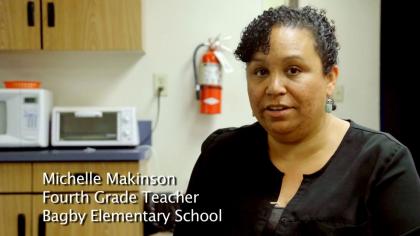Overview
Teachers who are developing students' capacity to "use appropriate tools strategically" make clear to students why the use of manipulatives, rulers, compasses, protractors, and other tools will aid their problem solving processes. A middle childhood teacher might have his students select different color tiles to show repetition in a patterning task. A teacher of adolescents and young adults might have established norms for accessing tools during the students' group "tinkering processes," allowing students to use paper strips, brass fasteners, and protractors to create and test quadrilateral "kite" models. Visit the video excerpts below to view multiple examples of these teachers.
The Standard
Mathematically proficient students consider the available tools when solving a mathematical problem. These tools might include pencil and paper, concrete models, a ruler, a protractor, a calculator, a spreadsheet, a computer algebra system, a statistical package, or dynamic geometry software. Proficient students are sufficiently familiar with tools appropriate for their grade or course to make sound decisions about when each of these tools might be helpful, recognizing both the insight to be gained and their limitations. For example, mathematically proficient high school students analyze graphs of functions and solutions generated using a graphing calculator. They detect possible errors by strategically using estimation and other mathematical knowledge. When making mathematical models, they know that technology can enable them to visualize the results of varying assumptions, explore consequences, and compare predictions with data. Mathematically proficient students at various grade levels are able to identify relevant external mathematical resources, such as digital content located on a website, and use them to pose or solve problems. They are able to use technological tools to explore and deepen their understanding of concepts.
show more














